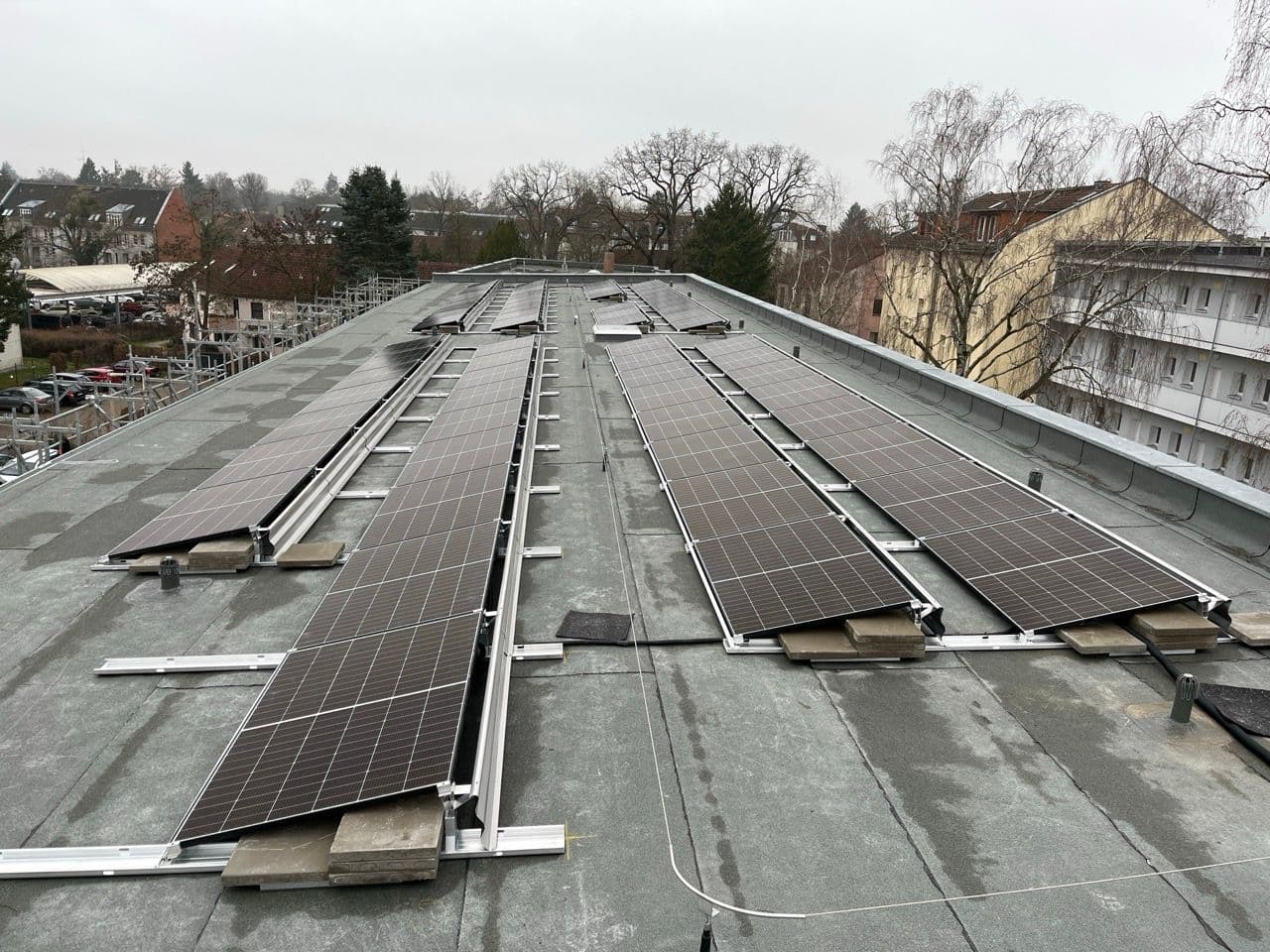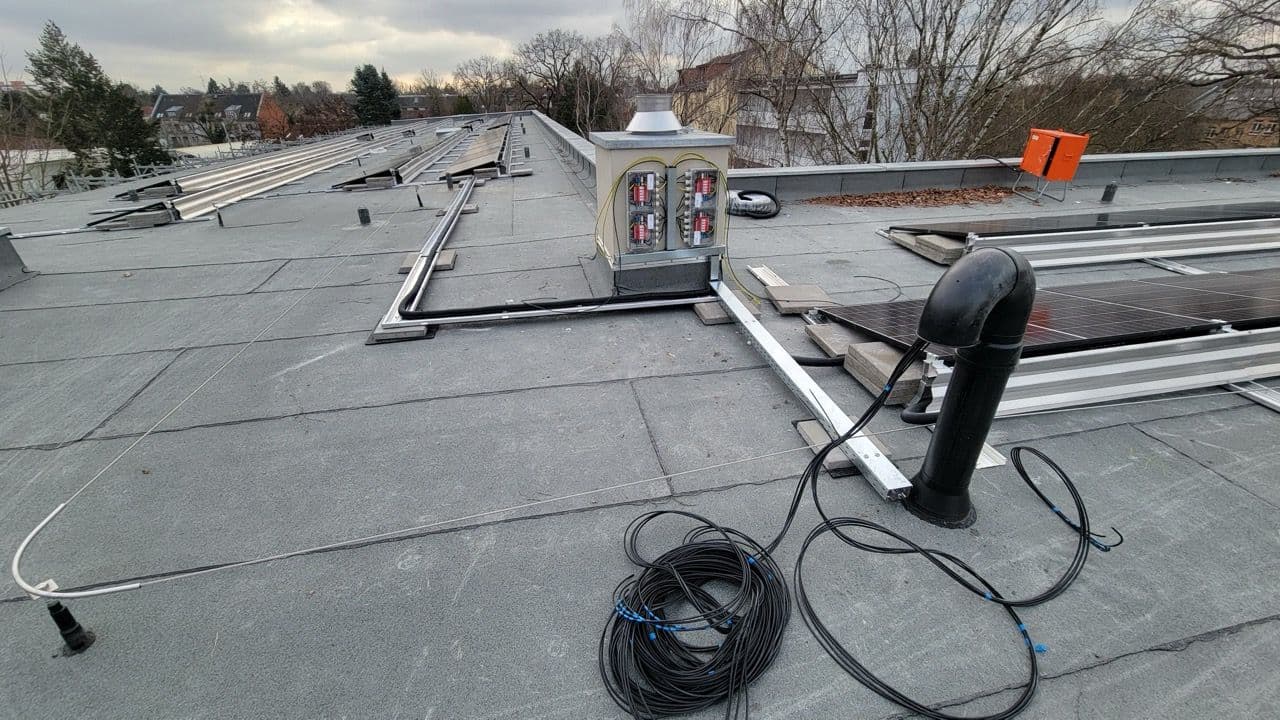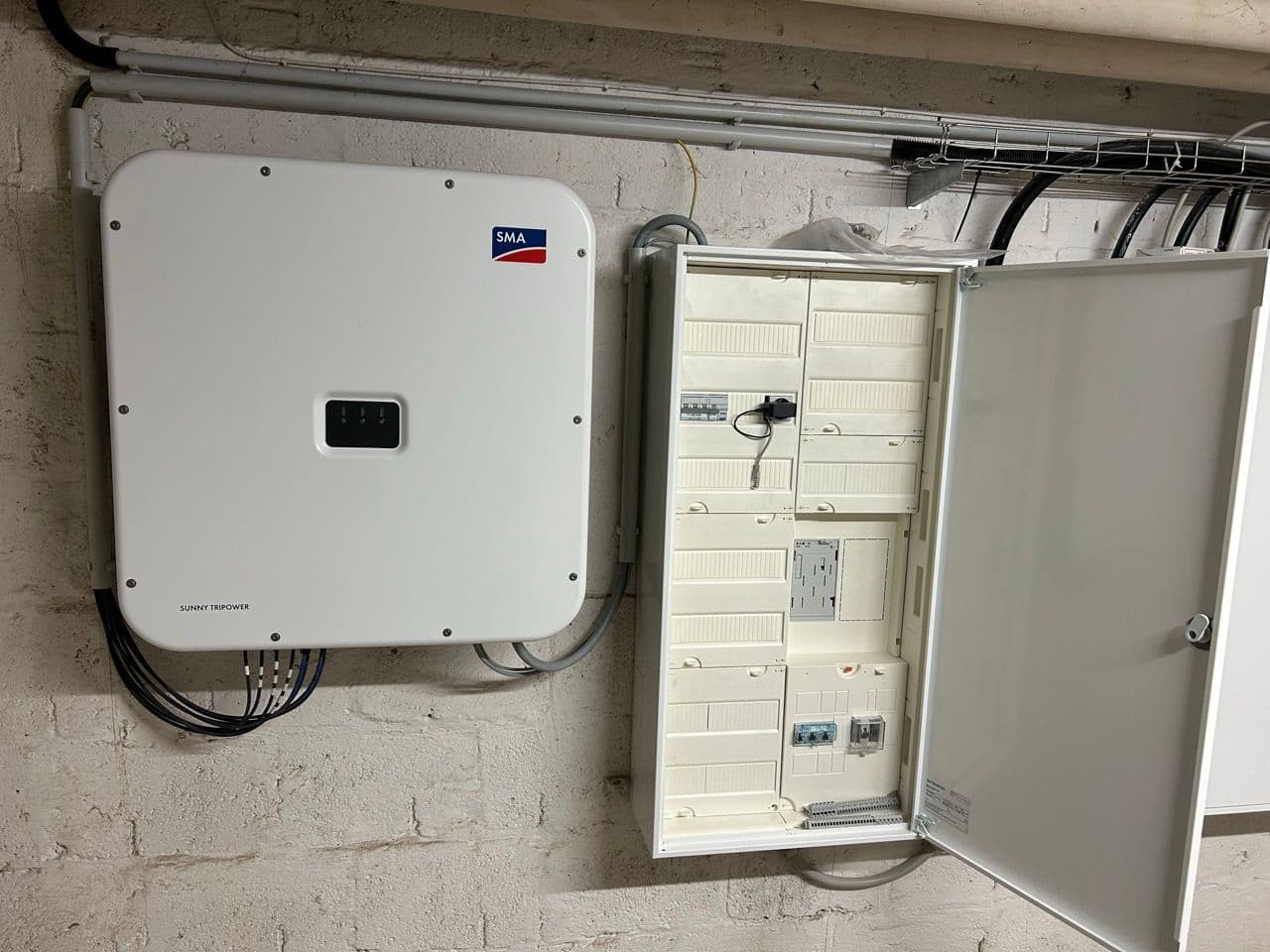OPD 135
Energy retrofit with PV system in Berlin – 50 kWp solar project enabling tenant electricity and faster ROI.
OPD 135
Energy retrofit with PV system in Berlin – 50 kWp solar project enabling tenant electricity and faster ROI.
Energy Retrofit & Tenant Electricity
As part of a comprehensive energy retrofit, the building’s roof was fully renovated and insulated. These measures not only improve the building’s energy efficiency, but also set the stage for a modern and sustainable power supply. Due to Berlin’s solar roof mandate for roof renovations, a photovoltaic (PV) system was installed — serving as both a legal requirement and a strategic step toward implementing tenant electricity (Mieterstrom). This synergy significantly increases the profitability of the overall project and leads to a faster return on investment.

PV System for Tenant Power
To prepare for a future tenant electricity model, the PV system was divided into two arrays, each connected to a separate house grid. Each system has a capacity of approximately 25 kWp, totaling 50 kWp. A total of 122 Trina Vertex solar modules (445 Wp each) were installed on a flat roof using the Novotegra mounting system. This ballast-based substructure avoids any roof penetration, making it ideal for retrofitted roofs.

Mounting & Cabling Details
The entire mounting system is secured by ballast only, preserving the integrity of the new roof — a critical aspect of the energy-efficient renovation. To ensure maximum safety, all solar cables between module rows are enclosed in protective conduit, and the modules are equipped with wind deflectors at the rear to withstand strong gusts. The cabling is routed into the basement via a gooseneck entry, protecting it from the elements. Due to the long cable runs, an additional surge protection device was installed before roof entry, enhancing the system’s overall reliability.

Grid Feed-In & Tenant Setup
Each of the two PV systems operates via its own SMA Tripower X25 inverter, and each is housed in a dedicated meter cabinet for grid feed-in. After final inspection, the utility provider installs the feed-in meter, enabling measurement of electricity sent to the public grid. This setup lays the groundwork for a future tenant electricity solution, allowing tenants to benefit from locally generated solar power — making the project both environmentally and financially sustainable.


